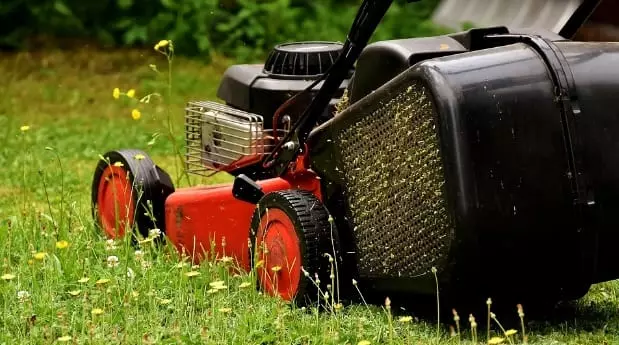Grass cutting services companies are kept very busy during the spring and summer. However, it is important that you know how to feed your lawn in winter and autumn as well or else, there could be no grass to mow in summer.
The more plants you grow in your lawn – grass, trees and flowers, the more the soil nutrients become depleted.
This means that with time, you will have to add some oomph to your soil. What do they say that if the grass is greener on the other side it’s because it has been fed and watered… if you would like the grass on your lawn to have that extra sheen and shine of health, feed your lawn.
A lawn mainly requires three minerals to flourish. These are phosphorous, nitrogen and potassium. All these minerals serve different roles in the growth of your lawn:
- Phosphorous – Good for root development and growth
- Potassium – Makes your grass drought and disease resistant
- Nitrogen – Helps in leaf growth and development. Yellowed unhealthy leaves indicate lack of nitrogen.
When you feed the soil, you feed your grass too. If your grass is getting all the nutrients it needs from the soil, it will be better able to resist diseases, pests and unfavorable weather elements. Poor soil means poor plants and there are no two ways about that. Well-fed soil is also going to retain moisture content nicely, thus leaving your plants nourished even if you do not water the lawn every day.
Feeding your soil organically
If you have an organic lawn, which is what many homeowners have, only two rules matter – what you feed the soil and how often you do it. Thankfully, organic fertilizer for feeding the lawn is always readily available. Some of the most common materials to use to make your organic lawn feed include leaves, straws, manure and grass.
When you hire grass cutting services companies, save the grass clippings. They will come in very handy in making organic feed for your lawn soil. Landscape maintenance services companies can help in the selection of top organic lawn feeds.
Using compost after grass cutting services to feed your soil
Lawn care services companies advise that the use of compost is one of the best methods for feeding the soil. Since the nutrient content of the compost depends on the source of the material used in the compost, if the plants used were not grown in rich soil, well, it means the compost will not be any good. When making your compost, make sure that the food scraps, grass clippings and leaves were grown in good soil. If you do not have good material to make compost with, buy ready compost from the stores.
Feeding your lawn chemically
Making your own compost may not always be possible, but you can apply chemical feeds to the lawn. These chemical fertilizers can come in fast-release form (water-soluble), which get to the roots fast. The second type is the slow release chemical feeds (non-water soluble) which take a longer time to show results. With the fast release fertilizers, results can be achieved in as few as 4 days. At Tender Care grass cutting services, we advise lawn owners to use a combination of fast and slow release fertilizers. That way, your grass experiences fast growth spurt and then the slow releasing components keep it nourished for a long time.
Green manure
Lawn maintenance services providers advocate the use of green manure. This is simple and very effective but like the compost, you have to make sure that the plants you will mulch and bury in the soil to decompose have grown in fertile soil. The best time to mulch down the plants is when they are about to bloom to prevent seeding, which would cause weeds to flourish. This method is only effective when you are preparing the ground for making a lawn since it cannot be used when grass is already growing.
The best time to feed the lawn
This should be after mowing the lawn since we want the fertilizer to be in contact with the soil. The fertilizer will also have enough time to seep into the soil before the next mow.
Spring and summer are the best times to feed the lawn. In spring, apply fertilizer after cutting the grass a few times. In summer, apply the fertilizer about 14 weeks after the spring fertilization, but do wait until it rains. Lawn feeding is something that our lawn care services team can advise you on. For summer, feed the lawn with moss control and weed killer.
Feeding the lawn in autumn and winter
Feeding your lawn is not strictly reserved for spring and summer. You can also do it in autumn and winter. For autumn, wait until the start of the rains, which could be end of August, September or even in October. Do not apply fertilizer too late in the year because it may cause harm, especially nitrogen as it may cause fusarium disease.
For winter, apply fertilizer as early as September and as late as April or as advised by our grass cutting services team.


